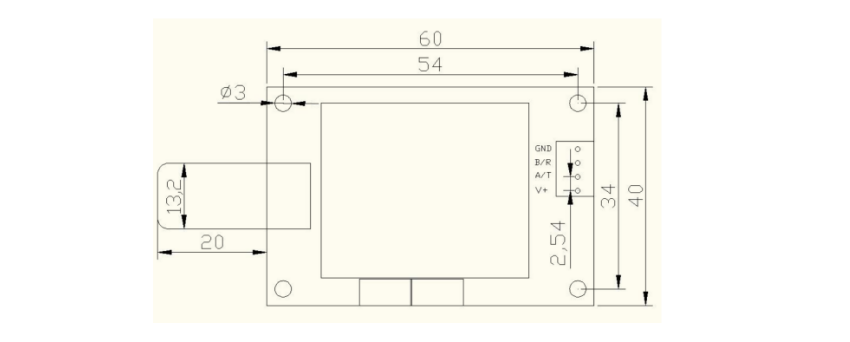The noise measurement module is a digitized noise measurement module. This module adopts the original imported sound sensor, digital filtering and time counting algorithm, which has the advantages of high reliability, good stability, wide dynamic range and no range conversion. At the same time, the unique standard 1 / 2 inch microphone size stainless steel probe design is adopted, which is closely coupled with the acoustic calibrator to facilitate the acoustic calibration operation. In addition, the main control board circuit core components are completely shielded, not only beautiful, but also strong anti-interference ability, but also convenient to embed in other equipment or case! The module adopts the general RS485 interface and Modbus RTU communication protocol, which is suitable for various application integration. Can be widely used in noise monitor, detector, automatic control system, environmental noise monitoring system, industry, workshop and other places that need measurement.

main parameter
a) accuracy
± 1.5 dB, calibrated at an ambient temperature of 23 ± 5℃, with an input signal of 94dB (1 kHz).
B) Frequency counting right
A weighted And c) time counting rights
F(fast-response) d) frequency range 20 Hz ~ 12.5 kHz
E e) reference environmental conditions
Meet the technical requirements under the following environmental conditions:
Air temperature: 23℃;Relative humidity: 50%;Static pressure: 101.325 kPa;
There is no strong mechanical vibration, shock, strong electromagnetic field and corrosive gas around.
F) Working environment conditions
Air temperature: -10℃ ~ + 50℃
Relative humidity: 20% ~ 90%
Static pressure: 65 kPa ~ 108 kPa
G) Measurement range at the 1 kHz frequency
30 dB(A) ~ 120 dB(A)
h) resolution ratio
0.1 dB
I) Effect of using the wind hood
Not greater than 0.5 dB in the important frequency range
j) power supply mode
DC5V or DC12V, the user is specified at the time of purchase. The specific power supply voltage can be seen on the
nameplate. The wrong voltage connection or the positive and negative electrode connection may lead to abnormal
module operation, and the module will be burned out in serious cases. Therefore, before electrification, be sure to
check carefully before electrification.
K) Output mode
RS485(ModBus)
l) power dissipation
Not more than 200 mW


